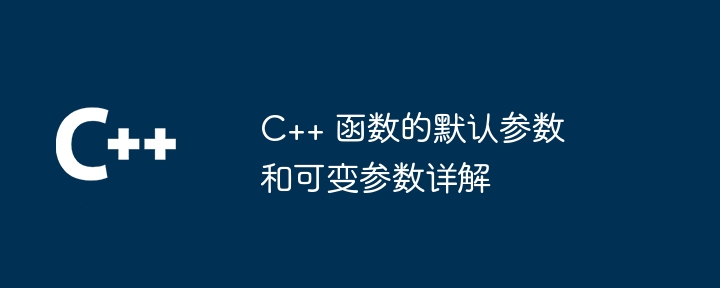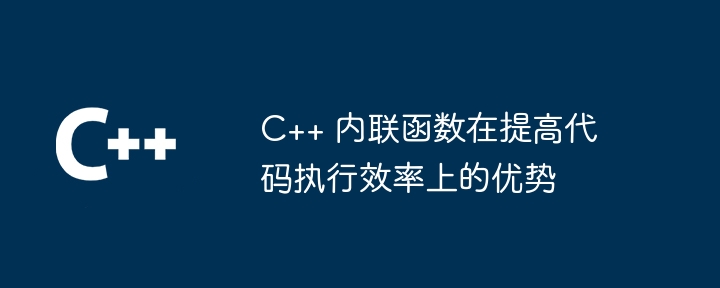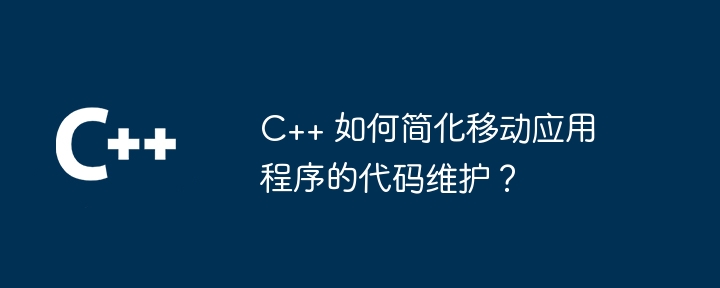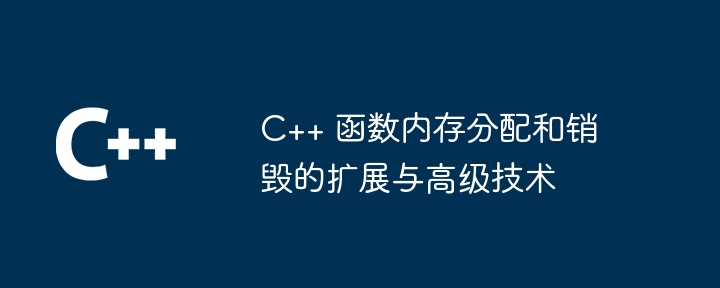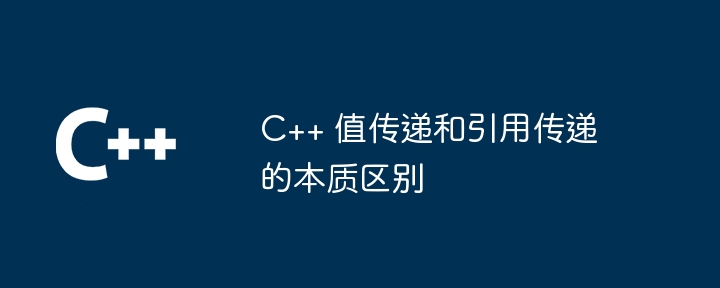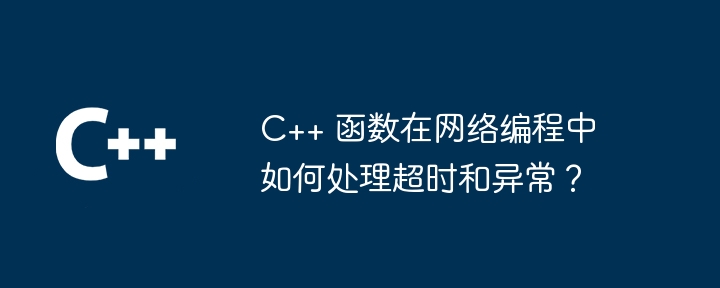如果一个数字可以仅使用其自己的数字和某些数学运算来表示,则该数字被视为“自拍数字”。
例如,936是一个自拍号码。
$$mathrm{936:=:(sqrt{9})!^{3}:+:6!:=:216:+:720:=:第936章
这里可以看到,对原数的数字进行了一系列运算,结果与原数相等。
回文自拍号码是一种特殊的自拍号码。他们满足自拍乘法规则。
考虑一个数字 x。
设 x 的数字反转后的数为 $mathrm{x^prime}$。
令 y 为由 x 的数字以不同顺序组成的数字。
设 y 的数字反转后的数为 $mathrm{y^prime}$。
回文自拍数满足以下方程 -
$$mathrm{x:×:x^prime:=:y:×:y^prime}$$
对于给定的数字x,根据自拍乘法规则求其回文自拍数。
Input: 1224 Output: 2142
说明 -
给定 x = 1224
所以 $mathrm{x^prime}$ = 4221 是将 x 的数字反转得到
令 y = 2142。y 是使用 x 的数字以不同顺序形成的
所以 $mathrm{y^prime}$ = 2412 是将 y 的数字反转得到的
$mathrm{x:×:x^prime}$ = 1224 × 4221 = 5166504 和 $mathrm{y:×:y^prime}$ = 2142 × 2412 = 5166504
Sincex× x' = y × y',y为x的回文自拍数。
Input 4669: Output: 6496
说明 -
给定 x = 4669
所以 $mathrm{x^prime}$ = 9664 是将 x 的数字反转得到
令 y = 6496。y 是使用 x 的数字以不同顺序形成的
所以 $mathrm{y^prime}$ = 6946 是将 y 的数字反转得到的
$mathrm{x:×:x^prime}$ = 4669 × 9664 = 45121216 和 $mathrm{y:×:y^prime}$ = 6496× 6946= 45121216
由于 x× x' = y × y',y 是 x 的回文自拍数。
Input: 456 Output: No palindromic selfie number exists
说明 -
给定 x = 456
所以 $mathrm{x^prime}$ = 654 是通过将 x 的数字反转得到的
令 y = 546。y 是使用 x 的数字以不同顺序形成的
所以 $mathrm{y^prime}$ = 645 是通过将 y 的数字反转得到的
$mathrm{x:×:x^prime}$ = 456 × 654 = 298224 和 $mathrm{y:×:y^prime}$ = 546× 645= 352170
由于 $mathrm{x:×:x^prime}$ ≠ $mathrm{y:×:y^prime}$,因此 y 不是 x 的回文自拍照数。
没有其他 456 的排列也满足自拍乘法规则。
查找给定数字的回文自拍照数字的解决方法相当直观且易于理解。
该方法包括以下步骤 -
定义一个“反向”函数
接受一个整数作为输入
将其转换为字符串
反转字符串
将其转换回整数。
定义一个函数“Swap”
采用整数 i 和 j 作为输入
将整数转换为字符串
交换字符串中的第 i 个和第 j 个字符
将字符串转换回整数。
定义一个函数“置换”
采用整数、l、r 和一组“排列”作为输入。
它递归地生成整数数字的所有可能排列
它将它们存储在“排列”集中。
定义一个函数“palindromic_selfie”
采用整数“num”和一组“permutations”作为输入。
它使用“permute”函数生成整数“num”的所有可能的排列
然后,它通过将数字及其逆序的乘积与排列及其逆序的乘积进行比较,检查这些排列中的任何一个是否满足回文自拍属性。
如果找到这样的排列,则返回该数字。否则,返回-1。
在主函数中,设置一个数字“n”和一个用于存储排列的空集。
使用“n”和空集调用“palindromic_selfie”函数,并存储返回结果。
如果返回结果为-1,则打印“不存在回文自拍数”。否则,打印返回结果。
以下 C++ 程序查找给定整数的回文自拍编号(如果存在)并返回它。它通过使用 permute() 函数找到给定数字的所有可能的排列,然后使用 reverse() 函数确定给定数字和该数字的任何排列是否满足 palindrome_selfie() 函数中的自拍乘法规则来实现此目的。如果不存在这样的数字,则会打印“No Palindrome Selfie Number Exists”。
#include <bits/stdc++.h>
using namespace std;
// Function to reverse the digits of a number
int reverse(int num){
// converting number to string
string str = to_string(num);
reverse(str.begin(), str.end());
// converting string to integer
num = stoi(str);
return num;
}
// Function that Swaps the digits i and j in the num
int Swap(int num, int i, int j){
char temp;
// converting number to string
string s = to_string(num);
// Swap the ith and jth character
temp = s[i];
s[i] = s[j];
s[j] = temp;
// Convert the string back to int and return
return stoi(s);
}
// Function to get all possible permutations of the digits in num
void permute(int num, int l, int r, set<int> &permutations){
// Adds the new permutation obtained in the set
if (l == r)
permutations.insert(num);
else{
for (int i = l; i <= r; i++){
// Swap digits to get a different ordering
int num_copy = Swap(num, l, i);
// Recurse to next pair of digits
permute(num_copy, l + 1, r, permutations);
}
}
}
// Function to check for palindrome selfie number
int palindromic_selfie(int num, set<int>& permutations) {
// Length of the number required for calculating all permutations of the digits
int l = to_string(num).length() - 1;
permute(num, 0, l, permutations); // Calculate all permutations
//Remove the number and its reverse from the obtained set as this is the LHS of multiplicative equation
auto n1 = permutations.find(reverse(num));
auto n2 = permutations.find(num);
if (n1 != permutations.end())
permutations.erase(n1);
if (n2 != permutations.end())
permutations.erase(n2);
// Go through all other permutations of the number
for (set<int>::iterator it = permutations.begin(); it != permutations.end(); it++) {
int num2 = *it;
// Check if selfie multiplicative rule holds i.e. x * reverse(x) = y * reverse(y)
if (num * reverse(num) == num2 * reverse(num2)) {
return num2;
}
}
// If no such number found
return -1;
}
int main(){
int n = 1234;
cout << "n: " << n << endl;
set<int> permutations;
int ans = palindromic_selfie(n, permutations);
if (ans == -1) {
cout << "No Palindromic Selfie Number Exists" << endl;
}
else{
cout << ans << endl;
}
return 0;
}
n: 1234 No Palindromic Selfie Number Exists
此代码的时间复杂度为 O(n!),其中 n 是输入数字的位数。这是因为有 n! n 位数字的排列,并且 permute() 方法生成数字的所有潜在排列。
由于集合“排列”包含所有可能的数字组合,等于 n!,因此该代码的空间复杂度为 O(n!)。 verse() 和 Swap() 函数的空间复杂度为 O(n),因为它们还生成长度为 n 的临时字符串。空间复杂度为 O(n!) 的排列集合主导了整个代码的空间复杂度。
回文自拍数是数学中一个有趣的概念。它们满足自拍乘法方程。本文讨论了一种方法来查找一个数字是否具有回文自拍号码,如果是,则返回它。对问题的概念、解决方法、C++程序以及程序的时间和空间复杂度进行了深入分析。
